This article is transferred from WeChat public number: Art War
(Introduction: Domestic cultural relics are seriously lacking in circulation channels, and only about 5% of cultural relics can be circulated. After the financial assetization channels of cultural relics and art, the art assets of a large number of collectors will be able to circulate, massive cultural relics Becoming a financial asset, accounting for corporate capital and injecting into a listed company. Undoubtedly, the financialization of cultural relics will bring a wave of collectors' wealth.
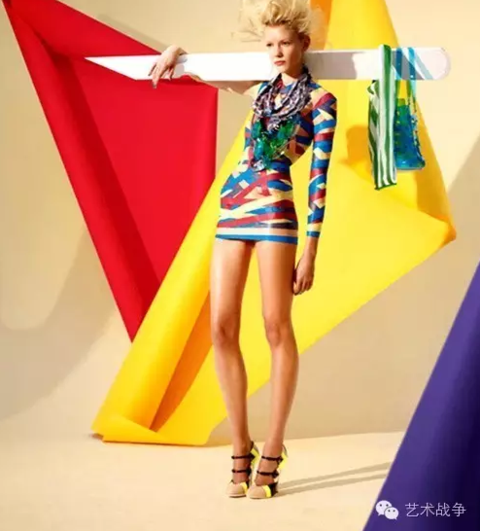
First, the cultural assets of cultural relics ushered in the tide of collectors
The assetization of cultural relics is to pass the process of identification, evaluation, confirmation, custody, insurance, and asset management of cultural relics, using the Internet of Things system and electronic tag tracking and traceability system for electronic ID card implantation, so that cultural relics Inheritance and order, become a financial asset, accounting for corporate capital and personal wealth.
Memorabilia of the Ten Years of Cultural Relics:
In 2010, the dawn of the present - the public has an unprecedented cherished height of cultural relics, the first-line supply is tight, antiques in the pursuit of traditional art and selling fakes.
In 2011, the value discovery---the increase in the rare varieties of cultural relics has greatly improved compared with the past, and the Taobao fever has rapidly upgraded.
In 2012, interest monopoly---interest groups use their own resources to promote the inheritance of cultural relics, to monopolize TV programs, package treasure experts, control auction companies, madly sell their own controlled collections, and suppress private collections.
In 2013, chaos was clustered – folk identification, collection of chaos, fake identification, fake auctions, and fake mortgage liar companies. Folk literature logistics is extremely poor. Collectors are in a dilemma.
In 2014, it was difficult to explore---the majority of antiques and cities distributed throughout the country have been changed to antique art malls, and the related art salons, art tea bars, exhibition halls, auction industry flourished, exhibitions, auctions, Large-scale cultural activities are emerging one after another. The text is difficult to explore in the art market.

In 2015, the turning point of innovation---the art e-commerce has sprung up all the time, and all kinds of exchanges of the Stock Exchange have appeared on the platform. Folk museums are developing rapidly. The way to buy antiques will be transformed from the way of Taobao to the way of financial management, and the art of cultural relics will be at the forefront of the financial industry.
In 2016, the docking of arts and enterprises---having a collection of fine cultural relics has become a symbol of minority identity and taste. Top companies collaborate with collectors to build museums and museums become standard for new businesses. Museum managers have become scarce talents in the workplace, and professional museum management institutions have developed in a chain.
In 2017, asset appreciation---the cultural assets of cultural relics set sail, the collection institutions invested in cultural relics and art assets, the cultural relics derivatives market prospered, the cultural industry developed rapidly, and cultural relics international exchange became the norm. Cultural relics will become scarce varieties, and the prices of cultural relics are high.
In 2018, the circulation of assets---the status of cultural relics as a financial collateral was established, and the mortgage of cultural relics became an important means of financing.
In 2019, the accumulation of wealth----investment in cultural relics became the biggest selling point for the wealthy people in the banking industry. The domestic trust industry began to sell cultural relics and art investment trust plans to the public. The cultural relics and art investment fund also came into being.
In 2020, the new rich group----having antiques is a symbol of taste and wealth. Cultural relics have become the label of the upper class, and cultural relics have become the carrier of Chinese family culture. Collectors have become a new rich group.
The assetization of cultural relics is a national strategy and an important support for the internationalization of the renminbi. The museum will become an important carrier of the cultural assets of cultural relics.
Article source network
Original title: "Artistic Art is about to usher in assetization"

Second, the era of art assets has opened, and a new wave of collectors is coming
In recent years, art finance has been a hot topic. Since the emergence of auction companies in China, art finance has begun to sprout, starting from a large-scale development in 2010. As financial capital continues to enter the art market, the market's investment in art collections has evolved from a simple personal hobby. The type of wealth management, more and more capital is involved in the art field through various financial forms such as art mortgage, art mortgage, art trust, art fund, etc., thus opening up the era of China's "art finance".
1. Art financialization becomes an asset
Art finance is the transformation of art into financial instruments, and the integration of financial assets into the financial management of individuals and institutions. Its main forms are: 1, art property transactions; 2, art funds; 3, art banks and trusts; 4, art mortgages and mortgages; 5, art rentals. At present, the mainstream of the market is the art fund for securitized art property transactions and private equity.
Different from the traditional concept of art trade, art finance as a personal and institutional financial management approach, covering three levels:
1. Assets and property rights of art works, including: property rights, copyrights, credits, equity, disposal rights and income rights attached to art works;
2. Assets enter the market and property rights transactions, and the rights attached to the artworks are listed and traded as private assets to complete the realization and circulation of artistic assets.
3. Investment, income and risk. When the art assets are operated in a financial way, they are objectively in line with the “financial three-sex†law, namely: profitability, security, liquidity, that is, in a general sense: investment, income And risk.
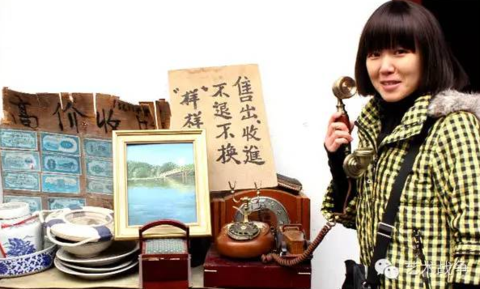
2, "Art Finance" promotes market prosperity
In the eyes of many people, art itself is a pursuit of dreams, but there are good ways to realize dreams. We say that money is not a panacea, but in fact the role of money in promoting the art is undeniable. Undoubtedly, the rational operation of the economic level will greatly promote the development of the art market; on the contrary, the sound and steady development of the art industry will also play a positive role in maintaining economic stability and improving the industrial structure. .
The attraction of art to financial institutions continues to increase, and the fire of the stars begins to form a prairie power. Financial capital not only refers to the art auction market, but also the financial capital represented by banks, trusts and funds, intervenes in the art field, and various art financial management. Products and art-based financial products have emerged frequently and have emerged in an endless stream. It has become a prominent feature of today's Chinese art market and promotes the prosperity of the financial market of the art market.
Cui Yue, who has been engaged in art finance for a long time, said that art finance has at least two major advantages: First, it greatly reduces the threshold for participation in art. Investors invest and trade the financial share of art assets, which can be large or small. More or less, art finance has brought art into the "home of ordinary people" in the true sense. Second, the art market has introduced “internet thinking†and accelerated the development of the platform. After the Internet, a new trading platform was born on the traditional gallery (primary market) and auction company (secondary market). The rules of this platform are Internet-based, namely: online terminal, free trading, big data system management, forming a new evaluation pricing mechanism, and the "mouse-speaking" mechanism makes the whole transaction process more transparent. More just. From this perspective, art finance is the landing and practice of Internet thinking in the art industry.
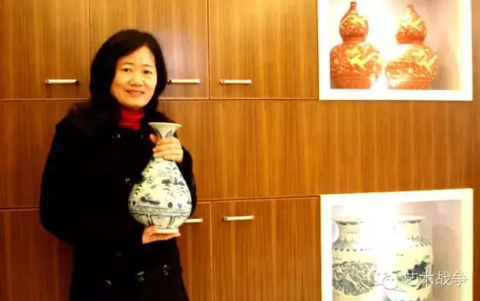
3, there is still a problem in the marriage of art and finance.
Art and finance are like a pair of lovers, Lang "fundamental" female "face". The financial wealth is coarse, and it is the first of all industries, and it also boosts the industry. Art is a precious spiritual wealth of mankind, a mysterious treasure house yet to be developed, and an indispensable element for human beings to improve their quality of life.
There are many models of art finance in China, but no matter which model, there are problems that need to be solved. Liu Shuangzhou, director of the Center for Auction Research at the Central University of Finance and Economics and vice president of the School of Law, said: "The first is security. It means that the risk of this model is controllable, but the art is very tangible, between the tangible and the intangible assets. Let its security issues be concentrated in the links, security and mode have nothing to do with, but from the experience of this model. Second is efficiency, financial activities must require benefits. Which is more efficient, when designing financial models The problem to be considered is precisely the problem of efficiency is not the art itself, but the problem of market analysis. Efficiency mainly points to the mode of art finance, and the efficiency of auction, pawn, trust, fund, insurance, etc. Why Chinese art market In the middle of the auction, the auction is more beautiful, and others are hard to make money. Because auctions have auction methods and systems, there are some requirements for setting up an auction company, which is more efficient from a profit perspective."
With the increase in the degree of "financialization of art", the Chinese art market must have a lot to offer, but the risks are also worthy of vigilance. How to coordinate the relationship between art and finance is also a question worth considering. The author believes that on the road of art financialization, we must abandon the traditional viewpoint, continuously improve investment skills, summarize the experience of collection, and fully consider the trend of art trade market, and view the financialization of art from a development perspective.
Source: "Arts China"
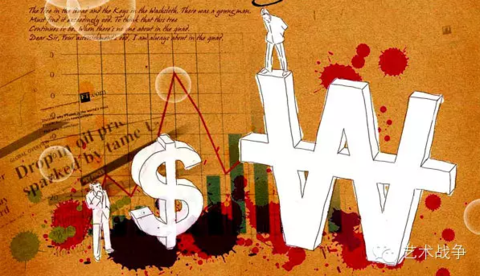
Third, the era of financialization of Chinese art assets
With the rapid development of the Chinese art market, the involvement of capital and financial instruments is the general trend, but how to intervene? What experiences can be learned from the West that have been walking on this road for many years? Our reporter interviewed Iain Robertson, director of the Art Business Research Department of the Sotheby's Institute of Art in London, and Wang Chunhua, the executive secretary of the China International Art Exchange Association.
1, China should not simply copy the West
The western art market has developed very early. There is a mature system in the field of confirmation, evaluation and auction. Many collectors are family-owned collectors with hundreds of years of history. The collection mentality is very different from that of Chinese collectors. The connection between Western art and finance is based on this.
Robertson said that there are two main forms of art and finance in the UK. One is a professional art fund, and the other is a private art wealth management product provided by large international investment clients such as JP Morgan Chase, UBS and Deutsche Bank. These banks also collect art as their own investment direction. For example, JP Morgan Chase Bank has been collecting art since its establishment. After a hundred years, it has a large collection. "In fact, the British is not as bold as the people imagined in the connection between art and finance. It is very cautious. It has taken these steps for decades."
Wang Chunhua once worked at Deutsche Bank, serving high-end clients of private art wealth management products. She said that even a well-capital international investment bank is very cautious in selling such products. First of all, in risk control, it will have poor risk-taking ability. Investors are turned away, and the investment cycle of art wealth management products is very long, usually 5 to 7 years. This is not an ideal investment tool for investors who need more cash flow. Most of them are willing to invest. Speculators, but people who are really interested in art.
In addition, in Europe, the use of art as a mortgage is not acceptable to all banks, because the evaluation of art is subjective, many banks can not make professional judgments, such as Deutsche Bank accepts art as a mortgage, but will never decide In case, but based on the type of art and historical data provided by the client, it is difficult to obtain contemporary art that is difficult to predict in the market.
As for the issue of the Cultural Exchange, which is of concern to the Chinese art world, Wang Chunhua said that there is only one Parisian cultural exchange in the West, and there is a Luxembourg Cultural Exchange that is preparing for it. It is expected to get a license next year. The essential difference between the Paris Stock Exchange and the China Cultural Exchange is that the asset packages issued are all deceased artists. The evaluation of their works is based on a set of market data. The transaction history is very clear and transparent. Human factors are involved. This is precisely what China lacks. The price gap between the first and second-tier markets of Chinese art is too large, making valuation a big problem.
Robertson believes that China's art financialization is still lacking in foundation. It is farther than the West, but it is faster than the West. In a few years, it can absorb and copy the Western system. It may be because it is going too fast and it is easy to fall. He said that the Western model today is determined by the laws of the Western art market itself. It has its own historical reasons. It is because of this internal factor that these financial instruments are developed, but China’s national conditions are completely different from those of the West. The difference between the mechanism and the cultural background is huge. Therefore, China cannot simply copy the existing models of the West. Instead, it should explore its own path and create its own rules of the game according to its actual situation.
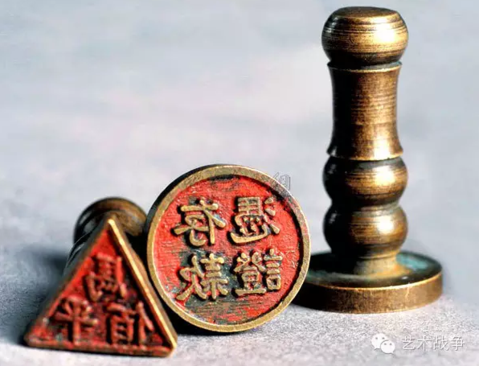
2, China and the West are playing a pricing power game
The scale of China's art market can be developed to today's scale, which is undoubtedly related to the Western art promoters of the 1980s and 1990s. It is because they have pushed a large number of Chinese contemporary artists to the international market, which has led to the prosperity of the Chinese art market that has been silent for many years. However, this also makes the pricing power of Chinese art in the hands of Westerners for a long time. Chinese auction companies should price the prices of several major Malaysian auctions. Nowadays, this situation is changing, and along with this pricing power game process is not only the money bag that the Chinese people are increasingly igniting, but also the re-examination of Chinese art in the international market.
Robertson believes that Chinese contemporary art has been favored since the 1990s. Until the 2008 financial crisis caused the price bubble of Chinese contemporary art to be disillusioned for many years, the market lost confidence. The West began to re-examine Chinese art. The more Westerners realize that the hype has become out of date, more and more auction houses, galleries and curators have begun to pay more attention to the individualized, independent language and artistic connotation of Chinese artists themselves, rather than looking to the future. How much can you fire?
In the interview, Robertson emphasized on several occasions the fact that the global market for Chinese contemporary art is over. He believes that this is not only the impact of the financial crisis, but the root cause is that most of the buyers and sellers of Chinese contemporary art are commercial speculators, most of whom are American financial investors, but lack real private collectors or have authority. Art history scholars and other experts check out the museums and art institutions.
Wang Chunhua also agrees with this judgment. She believes that many Chinese contemporary art works that have been speculatively expensive in the Western art market have not been really collected for aesthetic and artistic value. The artistic connotations of these works are not high, but only in the West. Materials, techniques, and forms of expression, to explain a certain history of China, cater to the Western pursuit of singularity and peeping attitude when China just opened its doors. Such works can only be used as a simple financial investment tool, and it is difficult to obtain in the West. The true recognition of art historians and critics.
Both experts said that with the decline of such works, the Western art world is paying more and more attention to new contemporary art that is more representative of China, and with the growing power of Chinese collectors and the maturity of auction and financial services institutions. The pricing power of these emerging artists is gradually shifting to the Chinese themselves.
In the current period of Chinese contemporary art experienced a break with traditional culture and art, incompatibility with the West, and abandoned by the international investment market, Robertson believes that a new generation of artists who have both an international vision and inherit the essence of Chinese culture It may be the most promising force in the future of the international art market. "China should gradually return to its own tradition, not only returning to the Chinese tradition in the way of creation, but also returning to the cultural temperament of China in terms of connotation." Robertson said.
Article author: Reporter / Li Jing
Article source: "China Culture News"
Pay attention to the "Tibe Treasure Map" WeChat public number (ID: cangbao88), Tencent Treasure Treasure Map brings you the value of collection, one day, every day!
Solid Color Microfiber Dish Drying Mat
Solid Color Microfiber Dish Drying Mat pays more attention to the pursuit and elegance of color, and the style tends to be simple and elegant. Plain color is generally reflected in color through dyeing process. There are polyester superfine fiber cloth and polyester brocade superfine fiber materials, which are more widely used in fabric materials and have better color fastness. Can use knitting warp and weft to weave fabrics and still have high-end tatting fabrics and cotton hemp fabrics, plain superfine fiber eat mat pays more attention to the weaving method diversification at fabrics, have size grid, stripe, wavy grain, according to sewing technology can be divided into package edge and with kao edge, package edge is to sew with cloth edge, kao edge is to sew with line edge. Customers for color and a variety of craft needs, we will uphold the superior quality, service first attitude, welcome all guests!
Solid Color Microfiber Dish Drying Mat,Microfibre Dish Drying Mat,Envision Home Dish Drying Mat,Microfibre Sink Drying Mat
Suzhou fortunate Textile co., Ltd , https://www.fortunatemicro.com